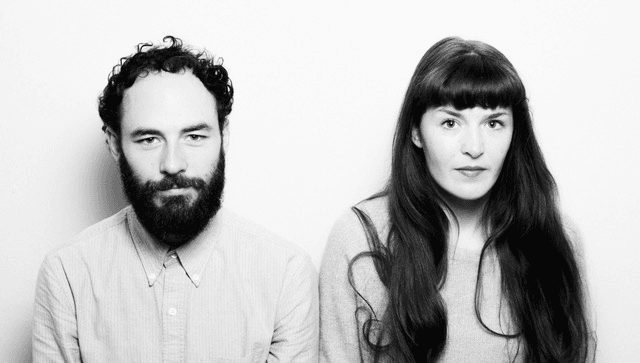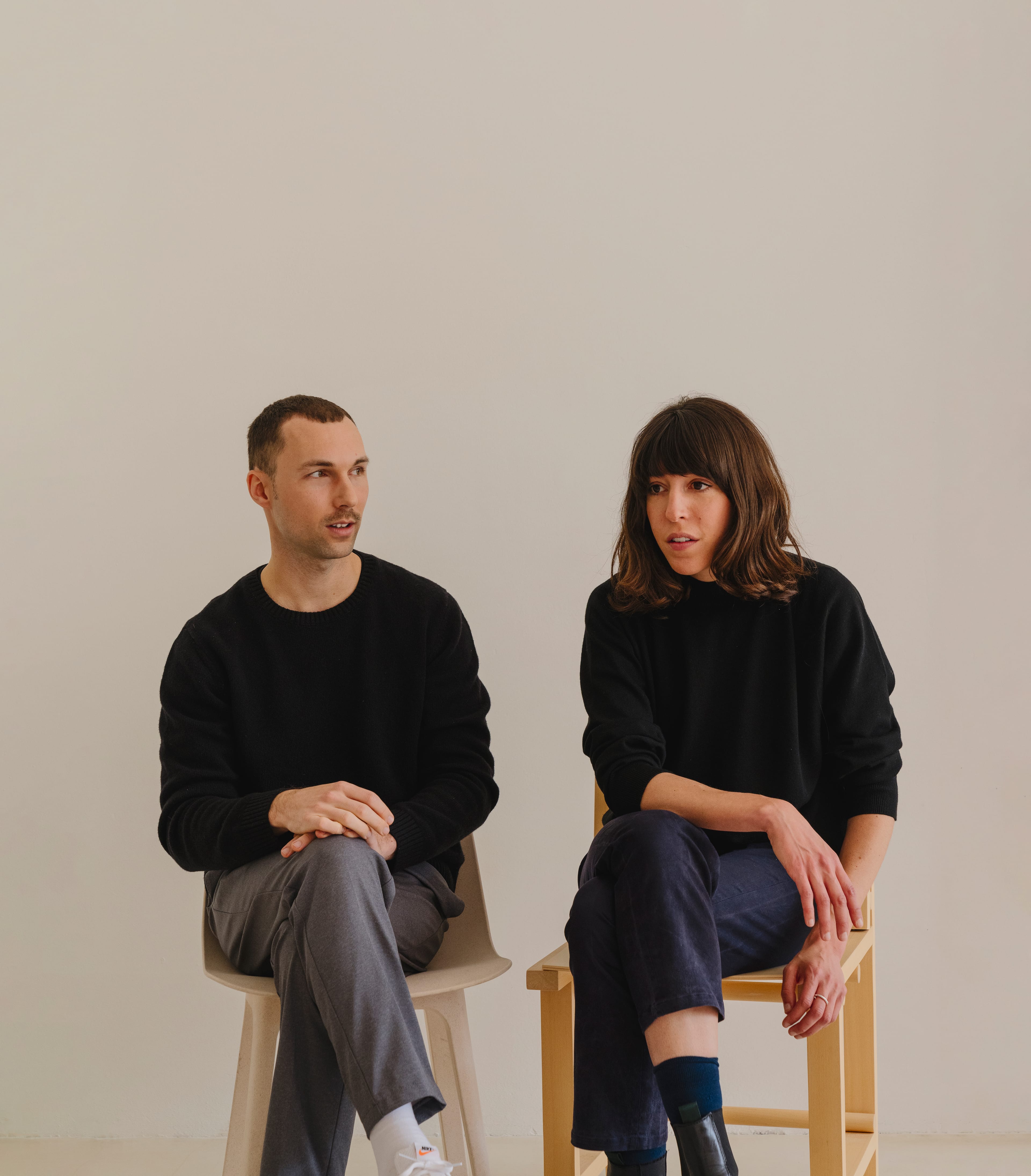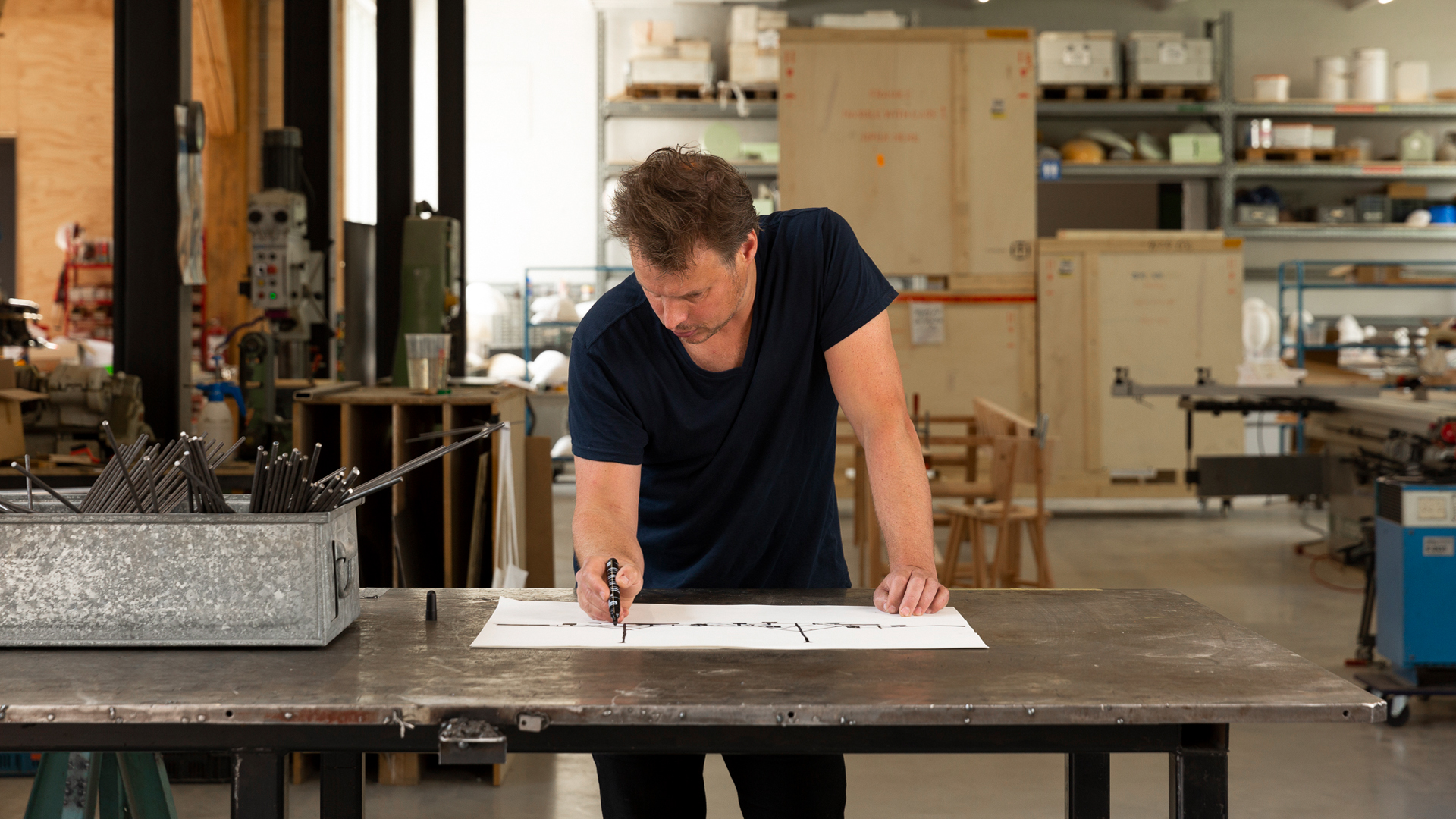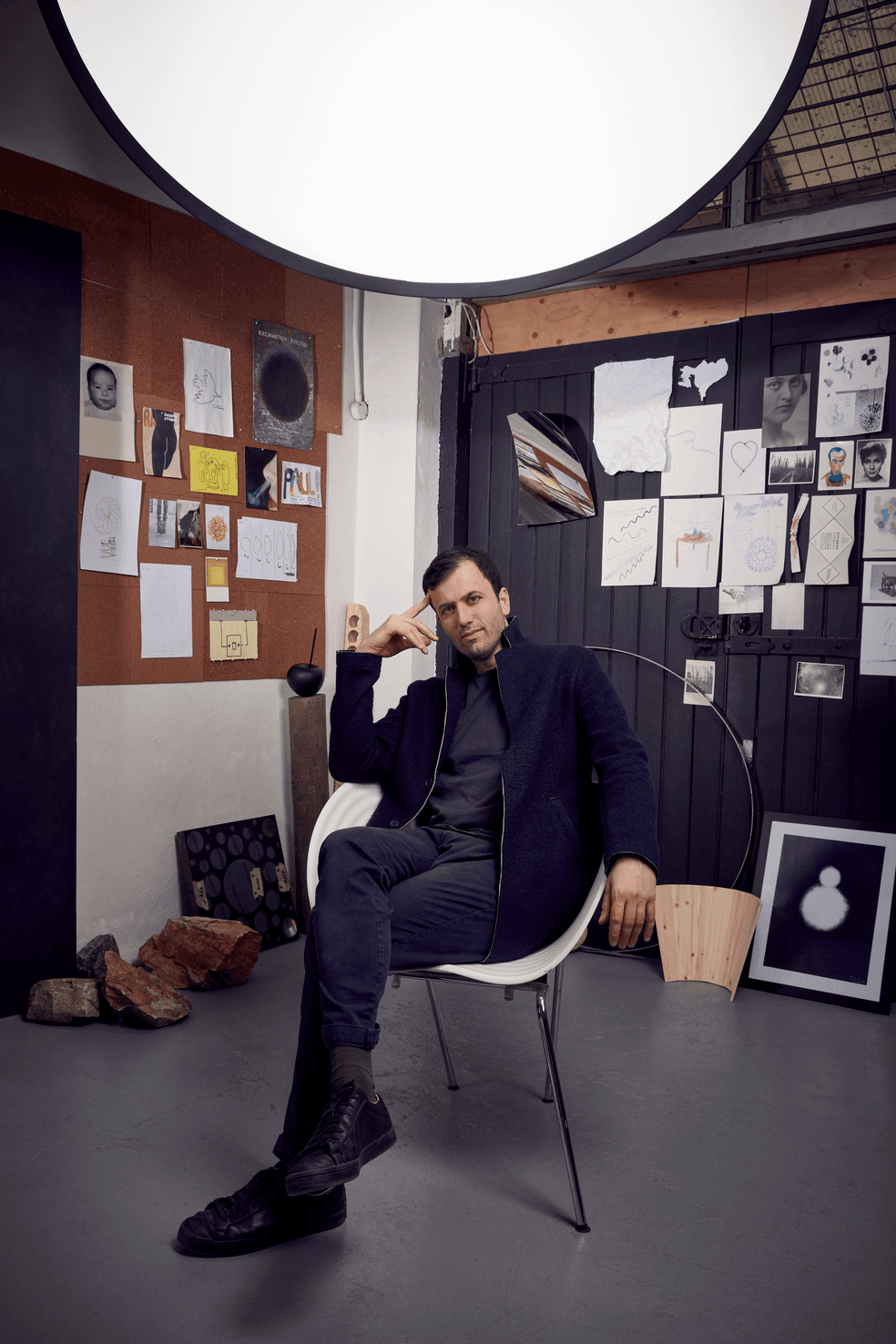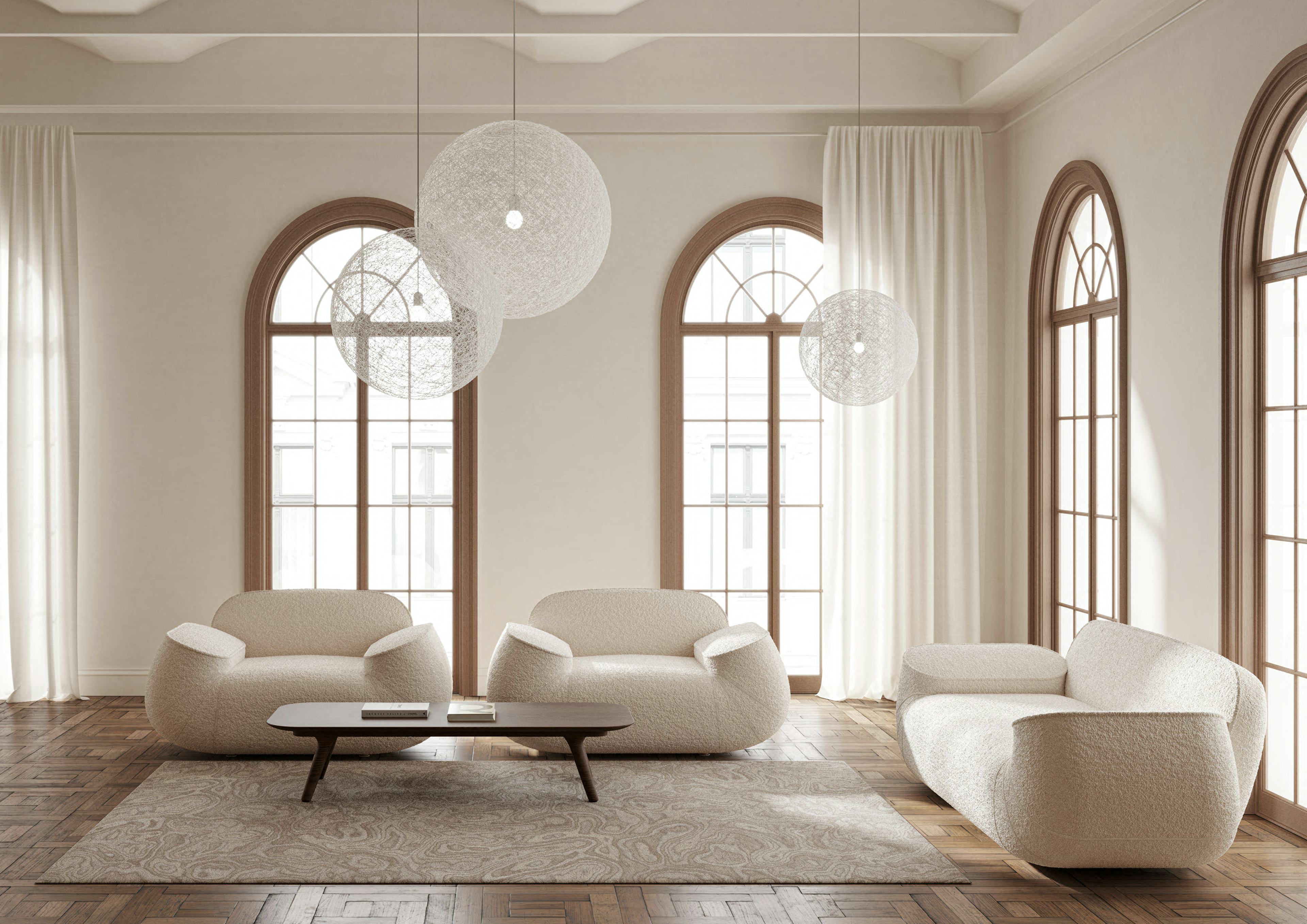From 7 February, the Moooi Stockholm Brand Store hosts a selection of kinetic objects from Smith & Winken. We spoke to Valeriy Kuznetsov (Smith) & Otto Winken (Winken), about their project Endless Movement and where they find their inspiration.
This interview is part of a series in which we sit down with creatives and in which we explore how they turn their dreams into reality.
Please tell us, who are Smith & Winken?
Smith & Winken is a studio laboratory created in 2020 by Valery Kuznetsov and Otto Winken. Smith & Winken combines two designers with a solid professional background and immense experience in architecture and product design.
Smith (Valeriy Kuznetsov) is a co-founder of the Ukrainian studio decorkuznetsov. Valeriy is an author of interior projects, participant of European exhibitions, and winner of international competitions, including Red Dot 2020, 2015. Otto Winken is a Ukrainian engineer and architect of Austrian origin. Otto has numerous architectural and unique design projects under his belt.
What can you tell us about your sculptures Skipper, Kabuki, and 903?
All three sculptures are part of a project called Endless Movement, a limited-edition kinetic sculpture collection that currently contains 20 objects. Skipper, with its moving light sources, is the illuminated one. The alternately pulsating form symbolises the permanency and cycling structure of life processes. The sculpture is built from contrast metal and paper pleats that resemble the durability and fragility of life.
Kabuki is about singing, music, dance, and drama forming a harmonious synthesis in one object. Everything is like in the Japanese Kabuki theater. Every move is thought out and accurate. Its plasticity is focused on creating a single image. The sculpture emphasises the beauty of open structures and focuses on the trajectory of moving parts.
903 is an embryo about to begin its movement and evolution. Sculpture 903 makes an oscillating movement along its usual trajectory. The viewer’s mind slows down and adjusts to a meditative perception of the world without noticing. The vessels move smoothly, as if on the edge of the miracle that is about to happen, of something new that is about to be born. Artificial intelligence has already created a perception of parallel reality. You immerse deeper and deeper, and the matrix has you.
What do your sculptures tell us or represent?
Each of the collection’s objects arose as an attempt to learn from the basic mechanisms and patterns of interaction between Earth’s structures, living and artificial. Again and again, we raised the question: What is life? Spirituality of inanimate nature or technicality of the living creatures’ existence? By exploring future scenarios, our work shows the hypothetical forms that can develop in the process of evolution.
How did it start? How did you come up with the idea for your sculptures?
There are no technical or technological revolutions in the Endless Movement project. Our goal was to observe, study, and rethink the world. An attempt to slow down and realize that everyday materials and phenomena can look different. Kinetic sculptures appeal to eternal movement, light, and their interaction with each of us. Their physical dimensions are commensurate with human proportions, and they are emotionally in tune. We have come a long way from finding a shape, images, creating countless sketches, to a finished object. Now we are moving in the right direction.
How have people responded to your work?
Those who have seen our works told us they had the impression the sculptures have some kind of magic. They convey a state of sensation outside of time and space, between the past and the future. Each viewer sees these objects in his own way. Some say that they are insects, others call them alien creatures, or strange plants. Each object in the collection has its own figurative name, which facilitates the “reading” of the underlying meanings and associations.
What did you want to achieve or say with your work?
We want to remind that each human is a mechanism just like our planet and the entire Universe. We aim to show the beauty of our world from a new perspective, make you look at the combinations of familiar materials and the laws of physics from an unexpected angle. We show the beauty of the eternal connections between mechanics and bionics.
We are attracted by the beauty of the mechanical interior, which we deliberately show in many objects. For us, our objects are spiritual beings. They breathe, live, exist. With movement, each object has its own life. For us, each of our objects floats in the air. Each of them is free.
Kinetics is mechanical bionics. We calculated the movements of each element to give the impression of living, almost meaningful creatures. They may very well be a form of life that once existed, currently exist on another planet, or will exist in the future.
Where do you find inspiration?
We immerse ourselves in all the “cultural layers” of humanity: the distant images of Leonardo da Vinci’s mechanical objects, and the radio devices of Dieter Rams. But also, the aesthetics of early space exploration, the beauty and precision of clockwork, Japanese minimalism, Art nouveau. We are inspired by pure beauty of combinations of simple materials—wood, paper, metal, enhanced by the play of light.
Our studio is in Dnipro, Ukraine. Dnipro was once the centre of the rocket and space industry in the USSR era. So, images of early space exploration are close. We are also inspired by the colours in the paintings of Dutch masters—Bosch, Brueghel, Rembrandt… Let us tell you a secret: our dream is to make a photo session of our objects in the Rijksmuseum.
Which current trends in the art and/or design world are you following right now?
During our exhibition in The Netherlands, a definition of the direction in which our studio works appeared: a mechanical renaissance. We wanted to show the new beauty of pure mechanics in the electronic-virtual era. Perhaps this is the beginning of a new trend?
One of the current trends that makes us very happy is the “fusion” of technology, design and art. Each item in our collection is produced as a limited edition, which is even more related to art objects.
What are you focusing on now?
We are currently developing the second collection, objects that will be interactive. They will interact with each other and with a person.
How do you see Moooi and Smith & Winken complement each other?
Moooi is engaged in design, viewing it as an element of art. This philosophy comes close to how we feel. It is a symbiosis of art, design, and technology. And of course, this freedom to experiment, openness to new ideas, even the most extraordinary ones.
In all that Moooi does, creates and envisions we contribute to ‘A Life Extraordinary’. What does A Life Extraordinary mean to you?
In 1970 in France, philosopher, sociologist, and futurist Jean Baudrillard made a prediction in his book ‘The Consumer Society’’. He predicted that what’s most valuable and expensive in our era will be experiences. Not material values, but namely a strong and pure inner experience a person satiated with material goods can experience.
For us, these are objects of a new luxury – emotional luxury. Real luxury. We want ordinary things – such as mechanics, the beauty of movement and light, to be shown in an extraordinary language, with the help of an extraordinary format of our objects. And this extraordinary life can be given by objects, for example, from the incredible design collection Moooi.

Visit our Moooi Stockholm Brand Store from 7 February and discover the kinetic objects series from Smith & Winken
Opening hours
Monday – Friday, 10 a.m. – 6 p.m.
